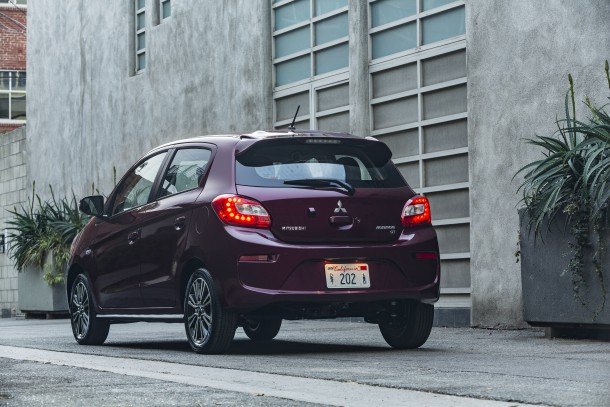QOTD: What Millennials Want?

I can’t claim to know what Millennials want — I don’t consider myself a member of that particular cohort. Depending on the source, I’m either one year into that demographic or one year removed, but given that my circle of friends starts at about five years my junior and tops out at 20 years my senior, I’ll accept one older aquaintence’s assertion that I’m “the ragged edge of Generation X.”
That said, social media makes one a sometimes unwilling observer of this curious group of people and, amid their incessant political tweeting, the Millennial’s automotive angst emerges. Basically, cars are too expensive, OEMs have abandoned them, and the Boomers stole their future. And I thought Gen-Xers were supposed to be miserable grumps.
What automotive balm would soothe these pains?
Before I’m accused of being an aloof, cigar-chomping plutocraft, allow me to say that slow wage growth, inflation, and ballooning education costs haven’t left the average young worker in better car-buying shape than their Nixon-era predecessors. And that’s rough. The annoying stories written over the past few years about Millennials ditching car ownership has more to do with money than attitude or ideology.
Put some cash in a Millennial’s pocket and they’ll likely show up at the dealer, assuming they’re living in or around a city that doesn’t make vehicle ownership prohibitive. (Also, assuming they’re not convinced their personal contribution to greenhouse gas emissions is the tipping point between paradise and annihilation.)
Yes, vehicle prices are on the rise, and the threatened status of low-end cars doesn’t spell a rosy future for youngsters hoping to buy a sub-$20k car in the years ahead. But are cars really that more expensive? Not really. Adjusted for inflation, a 1989 Honda Civic DX hatchback would retail for $17,760 before delivery. A 1990 Chevrolet Cavalier RS coupe, combining a 3.1-liter V6 and five-speed manual? $19,238. Getting into a 1989 Suzuki Swift GTi (1.3-liter) would set you back $18,312.
It’s not the cars, it’s the wallets. But is there an argument to be made that today’s products lack a certain passion or, dare I say it, soul? A Twitter user who’s far more experienced than I suggests product is indeed the problem. Cash-strapped buyers need more practicality, he argues.
I’m of the mind that the Suzuki Jimny would be a bona fide hit if offered here, though even that fun, rugged little SUV would run into the same pricing problem. Base price of an overseas-market Jimny? A tick over $21,000. The inflation-adjusted price of an entry-level 1989 Suzuki Samurai? $20,305.
Looking at (sinking) sales stats for truly cheap cars, I’m not convinced it’s possible to pull off the creation of a successful Millennialmobile; younger buyers often demand a certain level of technological content and refinement. OEMs would probably balk at the development costs and tiny margins. Even if a bottom-end vehicle rose above the appeal and utility of a Mirage or Versa, there’s no guarantee buyers would leave the used market behind or stop biking and Ubering to sign the note. Still, this is an exercise in imagination.
What does an automaker have to do to lure low-paid Millennials? What type of vehicle would draw twentysomethings like a Beto O’Rourke rally? Let your mind go wild, and don’t hesitate to toss out price points.
[Image: Mitsubishi Motors]

More by Steph Willems
Latest Car Reviews
Read moreLatest Product Reviews
Read moreRecent Comments
- Jeff Self driving cars are not ready for prime time.
- Lichtronamo Watch as the non-us based automakers shift more production to Mexico in the future.
- 28-Cars-Later " Electrek recently dug around in Tesla’s online parts catalog and found that the windshield costs a whopping $1,900 to replace.To be fair, that’s around what a Mercedes S-Class or Rivian windshield costs, but the Tesla’s glass is unique because of its shape. It’s also worth noting that most insurance plans have glass replacement options that can make the repair a low- or zero-cost issue. "Now I understand why my insurance is so high despite no claims for years and about 7,500 annual miles between three cars.
- AMcA My theory is that that when the Big 3 gave away the store to the UAW in the last contract, there was a side deal in which the UAW promised to go after the non-organized transplant plants. Even the UAW understands that if the wage differential gets too high it's gonna kill the golden goose.
- MKizzy Why else does range matter? Because in the EV advocate's dream scenario of a post-ICE future, the average multi-car household will find itself with more EVs in their garages and driveways than places to plug them in or the capacity to charge then all at once without significant electrical upgrades. Unless each vehicle has enough range to allow for multiple days without plugging in, fighting over charging access in multi-EV households will be right up there with finances for causes of domestic strife.


































Comments
Join the conversation
If you're unlucky enough to be paying your own expenses instead of inheriting your parents' car, and you're not down with the wrenching, and you live somewhere gas isn't dirt-cheap, then I think the bargain lease on the last model year of a generation of an unloved economy car is the way to go. There were insane deals on the last-gen Chevy Cruze and last-gen VW Jetta. Three blissful, reliable, economical, fully-warranteed years of affordable motoring pleasure, and no commitment beyond that.
There is so much flexibility in the rental market i can see why many milennials dont want to own. Locally i can get an Enterprise weekend rental for $45 Fri - Mon. I can do Zipcar or Maven to get a car for a few hours. Then there are those peer to peer rental websites as well.